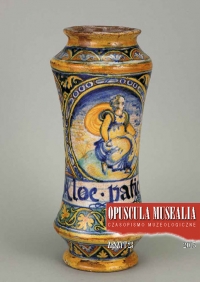New Information Provided by Multidisciplinary and Combined Studies, Including Radiography, XRD and XRF, of the triptych the Last Judgement from National Museum in Gdańsk: Rogier van der Weyden and Hans Memling co-authorship
New Information Provided by Multidisciplinary and Combined Studies, Including Radiography, XRD and XRF, of the triptych the Last Judgement from National Museum in Gdańsk: Rogier van der Weyden and Hans Memling co-authorship
Author(s): Iwona Szmelter, Philippe Walter, Hélene RousseliereSubject(s): Museology & Heritage Studies, Visual Arts, 15th Century
Published by: Wydawnictwo Uniwersytetu Jagiellońskiego
Keywords: multi-criteria research; non-destructive tests of artworks; 15th-century Flemish painting; Rogier van der Weyden; Hans Memling; synergy of sciences in artwork analysis;
Summary/Abstract: Examination of the Gdańsk triptych Last Judgment carried out by the Faculty of Art. Conservation of the Academy of Fine Arts in Warsaw and CHARISMA Group researchers included XRD/XRF, multispectral reflectography MNIR and other methods. They have shown that the work, a typical example of 15th-century Flemish art, was probably begun by Rogier van der Weyden (design, drawings and some underpainting, and completed by Hans Memling. Dendrochronology tests have confirmed that the support from Baltic oak might have been ready for painting in 1460, i.e. 4 years before the death of Weyden. The Last Judgment’s unique expression is due to its Northern Renaissance features.
Journal: Opuscula Musealia
- Issue Year: 2015
- Issue No: 23
- Page Range: 61-73
- Page Count: 13
- Language: English

